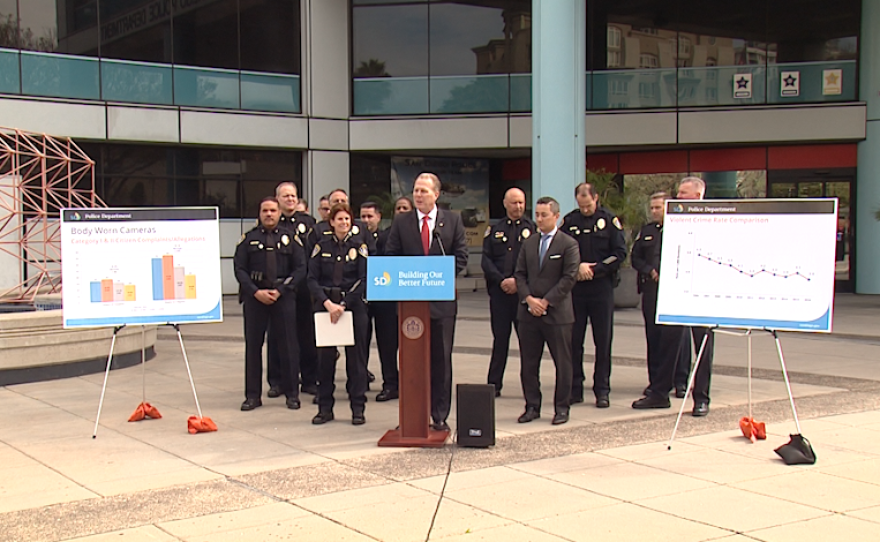City leaders Tuesday hailed statistics for calendar year 2016 that showed San Diego crime dropped to its lowest level in four decades.
Overall, crime in San Diego decreased by 2.3 percent in 2016 from the prior year, with violent crime down 4.5 percent.
The lower violent crime rate was mainly the result of a 7.7 percent drop in aggravated assaults. Murders increased from 37 to 49, and rapes increased from 566 to 572. Gang-related crimes increased slightly, while domestic violence cases fell 7.8 percent. Vehicle thefts climbed by 14.6 percent to 5,839.
The overall crime rate was fewer than four crimes per 1,000 residents.
During an afternoon briefing in front of downtown SDPD headquarters, Mayor Kevin Faulconer commended "all of our officers for the tremendous job that they've done and continue to do for us every single day and every single night."
"Police and residents are united around the same goals — neighborhoods where our families are secure and our children can play and run around without worry; a responsive and compassionate police department — and, ultimately, a safe San Diego for everyone," the mayor said.
Faulconer added that improved community trust has also helped reduce crime.
"Our city has put a real emphasis on non-biased policing and diversity training to make sure that all San Diegans in all neighborhoods are not just safer but feel safer as well," he said.
Police Chief Shelley Zimmerman — who spoke at a news conference and later presented the data to the City Council — pointed out that there were nearly 800 fewer documented victims of crime in the city last year than in 2015.
"Now, 785 is a large number, but this ... just isn't a statistic or a random number on a piece of paper," she said. "This represents real people — our mothers, our fathers, our children, sisters, brothers, friends and neighbors, (all of whom) did not fall victim to crime."

Echoing the mayor's comments, Zimmerman described her department's collaborations with the public as key to reducing crime rates and keeping them low.
"We know our community needs us, and we need our community's support," the chief said. "Our community—policing philosophy embraces and understands the value of partnering together to fight crime, because public safety is a shared responsibility."
The decrease in crime comes despite a staffing shortage at the department, which has more than 200 vacancies. Zimmerman acknowledged needing more officers, but she said the use of technology such as facial recognition cameras has helped the city offset the department's high turnover rate.
In a separate report, the SDPD credited the nearly 1,200 body cameras used by officers with reducing the number and intensity of confrontations with members of the public.
According to the data, major complaints from the public against officers — over issues such as discrimination, racial slurs, lack of courtesy or poor service — dropped from 167 in 2013, before the cameras were deployed, to 129 last year.
Few of the worst complaints ended up being sustained after an investigation.
Major use-of-force incidents — an officer's use of weapons, a carotid restraint, chemical agents or Tasers — fell from 3,208 to 2,682 from 2013 to last year. However, lesser incidents — brandishing a weapon, use of physical strength or firing a Taser warning shot — increased from 8,689 to 10,883.






